The more you know about your customers, the better the customer experience will be.
It’s that simple.
Customer analytics provide a quantifiable means of analyzing every touchpoint of the customer journey so you can understand it holistically, end-to-end.
From there, you can tailor your product, messaging, and offerings to create the best possible customer experience.
What is Customer Analytics & What is Its Importance?
Customer analytics involves the process of collecting and analyzing customer behavior to identify patterns, trends, and preferences to fully understand individual customer segments, as well as your customer base as a whole.
More specifically, it allows you to objectively see how your customers interact with your product from the very first touchpoint to submitting a form to the moment of purchase and beyond.
Customer data analytics is important for three main reasons.
First, it allows you to make highly-informed, data-driven decisions.
Rather than merely speculating about what’s getting results or what’s harming the customer experience, a predictive analytics tool provides you with a crystal clear picture based on objective data.
Second, you can implement your customer insight findings to continually refine and optimize the customer experience.
As you generate data on customer behavior, customer satisfaction, customer churn, and so on, this provides valuable insight that you can use to enhance the overall customer experience.
And third, this should help increase your collective customer satisfaction, which creates a ripple effect of positive outcomes, including stronger customer loyalty, less churn, longer retention, and ultimately, long-term business growth.
5 Benefits of Customer Analytics
Reduce Customer Churn
Churn is an inevitable part of running a business, and at least some amount of churn is unavoidable.
That said, it’s something you want to keep firm control over and reduce to a minimum.
After all, it doesn’t matter how many new customers you bring in if you can’t retain them.
One of the biggest benefits of predictive customer analytics is that it lets you use data science to learn more about when and why customers leave.
With Woopra, for example, you can see if users return after using your core product feature.

If the churn rate is higher than what it should be, you could then take a closer look to identify potential issues and experiment until you determine what the primary problem is.
From there, you could develop solutions until it’s resolved and your churn rate reaches an acceptable level.
Personalize Customer Journeys
Research has found that 60% of customers say they’ll repeat buy after a personalized shopping experience, and 40% of companies that get personalization right can potentially earn 40% more revenue.
These stats illustrate firsthand how vital personalization is to the customer experience.
And a customer analytics tool is ideal for delivering the level of personalization that consumers crave.
A simple example would be an e-commerce clothing company tracking what specific categories a person is looking for, what their favorite color is, what their most recent purchase was, and the types of images they click on.
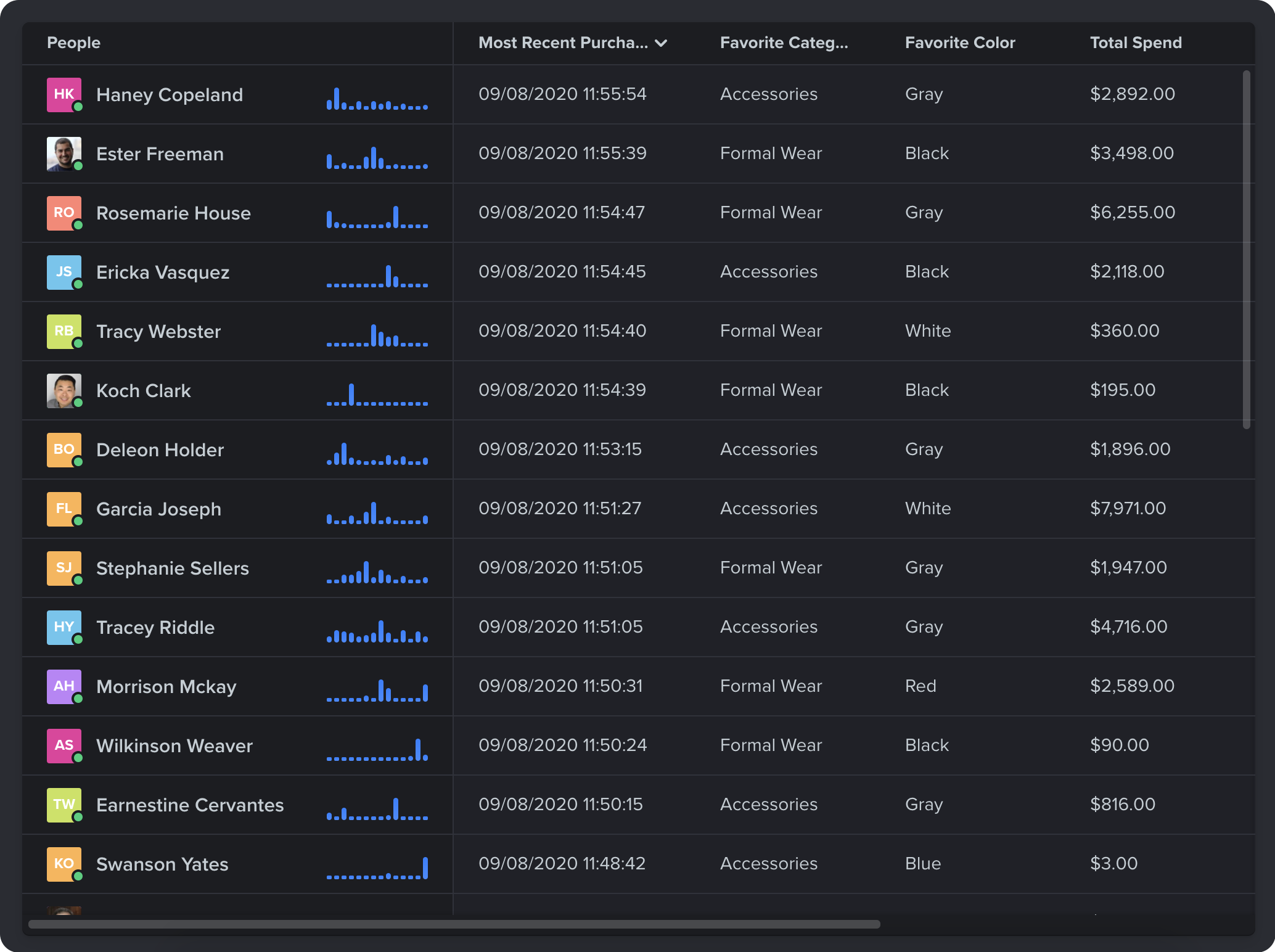
By gathering this data, they could then deliver a hyper-personalized experience for each customer interaction.
In turn, this helps create the best possible customer experience, which can increase the average order value, boost customer loyalty, increase customer retention, and in the long run, maximize customer lifetime value.
Increase Customer Upsells
You’ve probably heard the old adage, it’s cheaper to maintain an existing customer than to find a new one.
And that’s certainly true.
But where businesses can really win is by not just maintaining an existing customer, but strategically upselling higher-value products.
One study found that “Upselling increases revenue by 10-30% on average, while 70-95% of business revenue comes from upsells and renewals.”
It’s also worth noting that there’s a 60-70% probability that you can upsell to an existing customer who you have a built-in rapport with.
Customer data analytics is ideal for this because it allows you to thoroughly analyze customer purchase patterns and general behavior much like a data scientist would.
By properly leveraging this data, you can provide highly customized offers that fit each customer like a glove to further enhance the customer experience and deliver additional value.
Improve Customer Engagement
Customer data analytics improves engagement in several ways. Here are just a few examples.
Going back to personalization, you can use customer analysis to figure out what types of messaging, offers, and so on customers are most receptive to and double down on them to boost engagement.
Another is determining which article categories get the most views.

By leveraging this data, you can create more content that your audience wants and trim back or even eliminate what they don’t have much interest in for more engagement.
There’s also customer segmentation where you use customer analytics data to segment customers into different groups based on behaviors, purchases, and preferences. Doing this should make your interactions more relevant, which, in turn, should raise engagement.
Also, you can use customer behavior analytics to detect when there’s a significant drop in product usage.
If there was a big drop in the number of SaaS product logins during the last month compared to the previous month, for instance, a customer service rep could be notified and take the appropriate action to resolve any issues before the customer leaves.
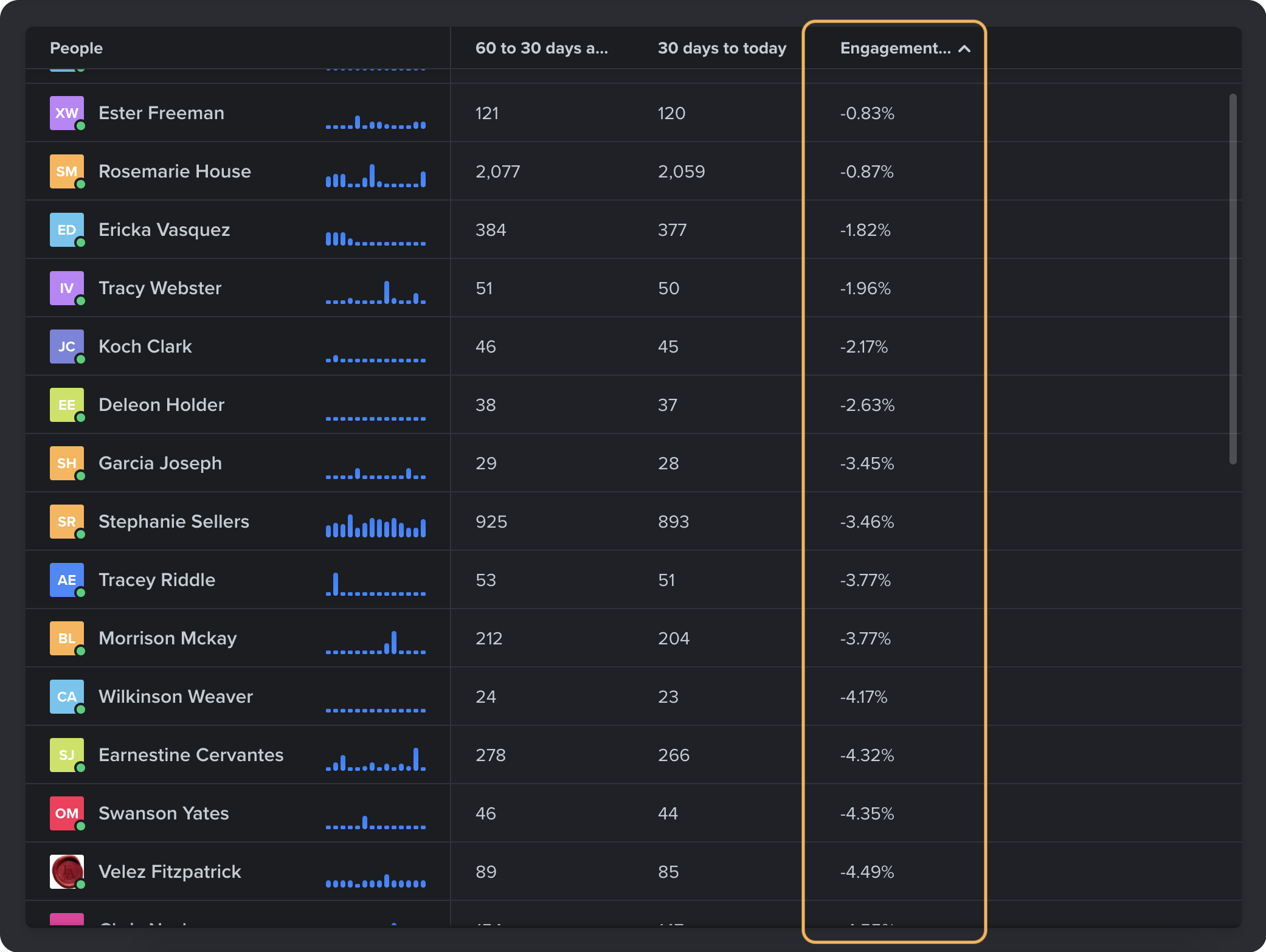
At the same time, they could obtain customer feedback to minimize friction points in the future.
So if you’re looking to integrate customer service analytics, this solution can work perfectly.
Measure Product Performance
Although you likely gain some idea of product performance by simply looking at basic metrics like company growth and customer churn, they don’t always tell the whole story.
But with customer experience analytics, you can fill in the gaps for a “30,000-foot view” of product performance.
One way in particular to use product analytics is to run customer retention reports where you track how long users continue to use a specific product feature, take a certain action, or continue to use your product after signing up.

Although retention will naturally drop over time, this can provide you with the big-picture perspective needed to determine the overall trajectory of your product performance and identify minor issues before they escalate into something larger.
The end result should be an amazing product that customers want to keep using, which naturally boosts customer retention and loyalty.
And it’s this ability to utilize past performance to achieve future goals that are at the heart of prescriptive analytics.
Types of Customer Analytics
Customer Journey Analytics
As we mentioned earlier, tracking each touchpoint along the customer journey is essential for understanding everything holistically.
And customer journey analytics allows you to do just that.
With it, you can observe each customer’s individual touchpoints from the moment they first land on your website until the point of purchase and beyond.
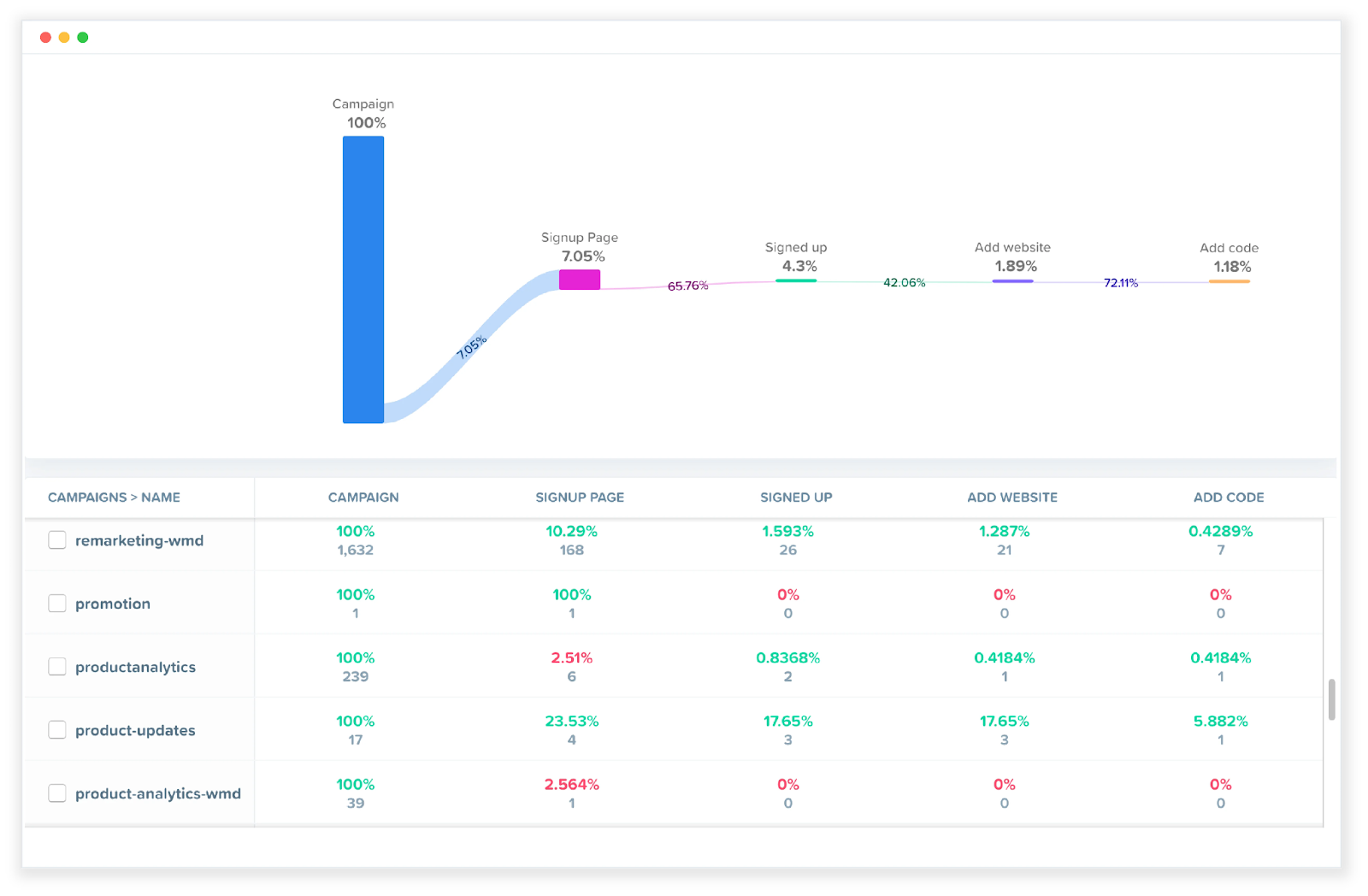
By using this data, you can gain actionable insight on:
- Which marketing strategy works best
- What’s driving engagement and customer acquisition
- How many free users move on to purchasing a paid version of your product
- Where leads and customers are dropping off
- And much more
Customer Experience Analytics
This type of customer analytics software deals specifically with analyzing customer interactions and feedback end-to-end across all major touchpoints to understand the customer experience as a whole.
By having access to this data, it helps you refine your marketing campaign, optimize your offerings, create smoother customer engagements, and offer better customer service to ultimately create a higher level of customer satisfaction, loyalty, and advocacy.
For instance, you might use customer experience analytics to determine what impact live chat has on conversions and how you could use it to raise customer satisfaction.
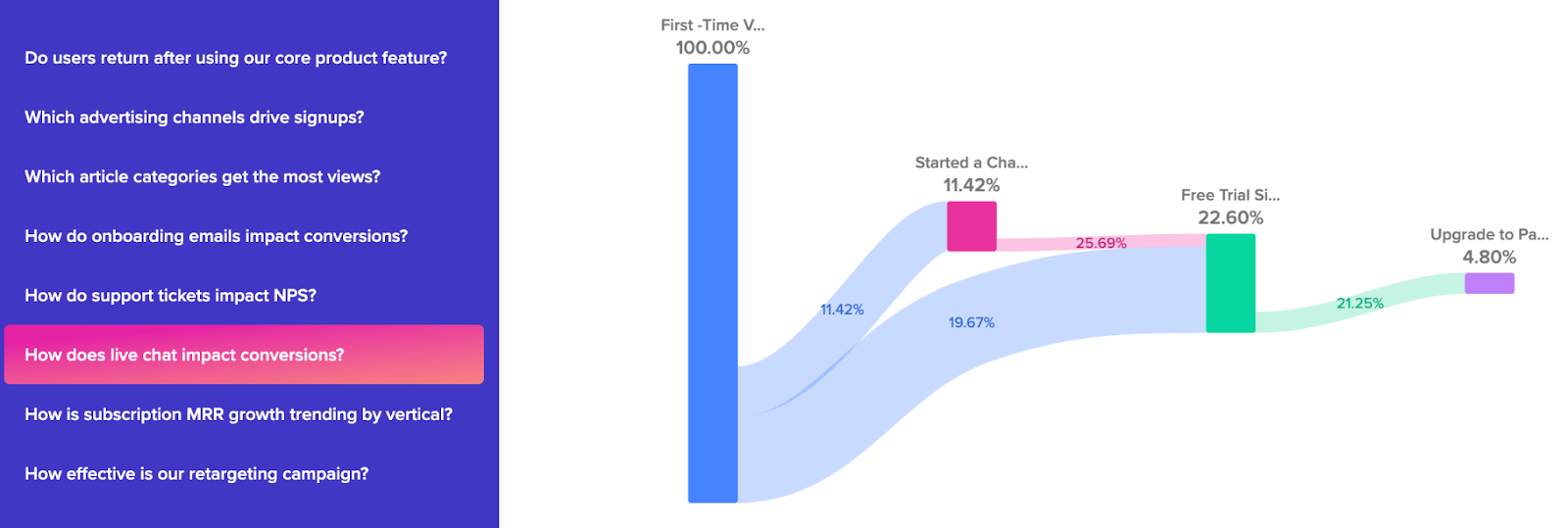
Customer Engagement Analytics
Another way to utilize big data is to monitor customer engagement and how it changes over time.
With trend reports, for instance, you can see how the number of user signups has changed over a certain period of time.
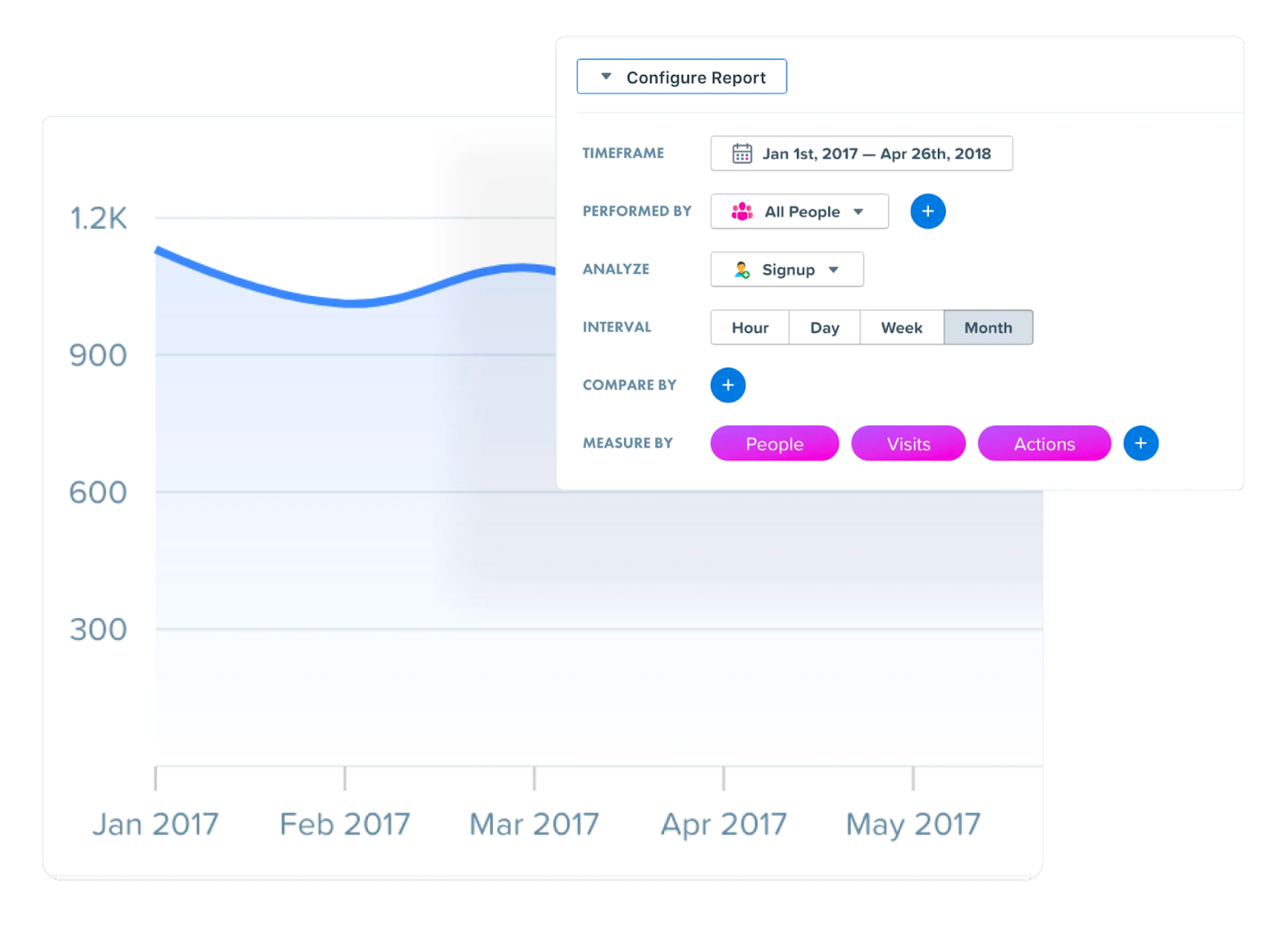
If the number of signups has noticeably increased, this would indicate your strategy is effective and you should likely rinse and repeat.
Or, if the number of signups has decreased, this would probably mean there’s an issue that needs to be resolved.
By keeping your finger on the pulse of customer engagement with this type of descriptive analytics, it essentially gives you the same capabilities as a data analyst and puts you in a position to create a more fluid experience for a higher customer success rate.
Customer Loyalty & Retention Analytics
Customer loyalty analytics use data to measure customer behavior that sheds light on how loyal they are to your brand.
One of the best ways to get a baseline reading of customer loyalty is by using retention analytics, which we discussed earlier.
Because there’s often a correlation between long-term retention and loyalty, this can give you a sense of how strong your collective customer loyalty is.
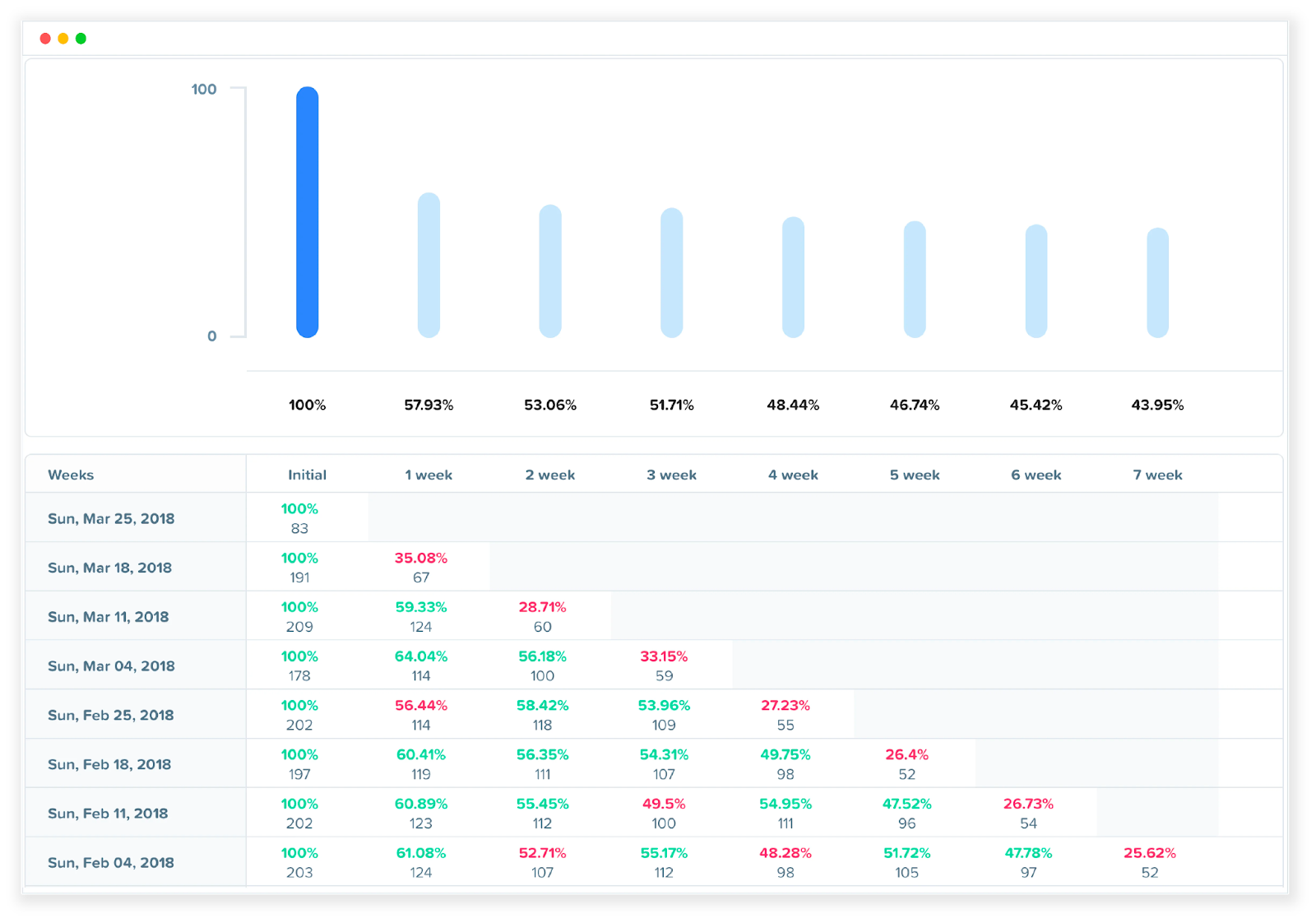
Besides that, you can look at your Net Promoter Score, which quantifies what percentage of your customers are promoters, passives, or detractors.
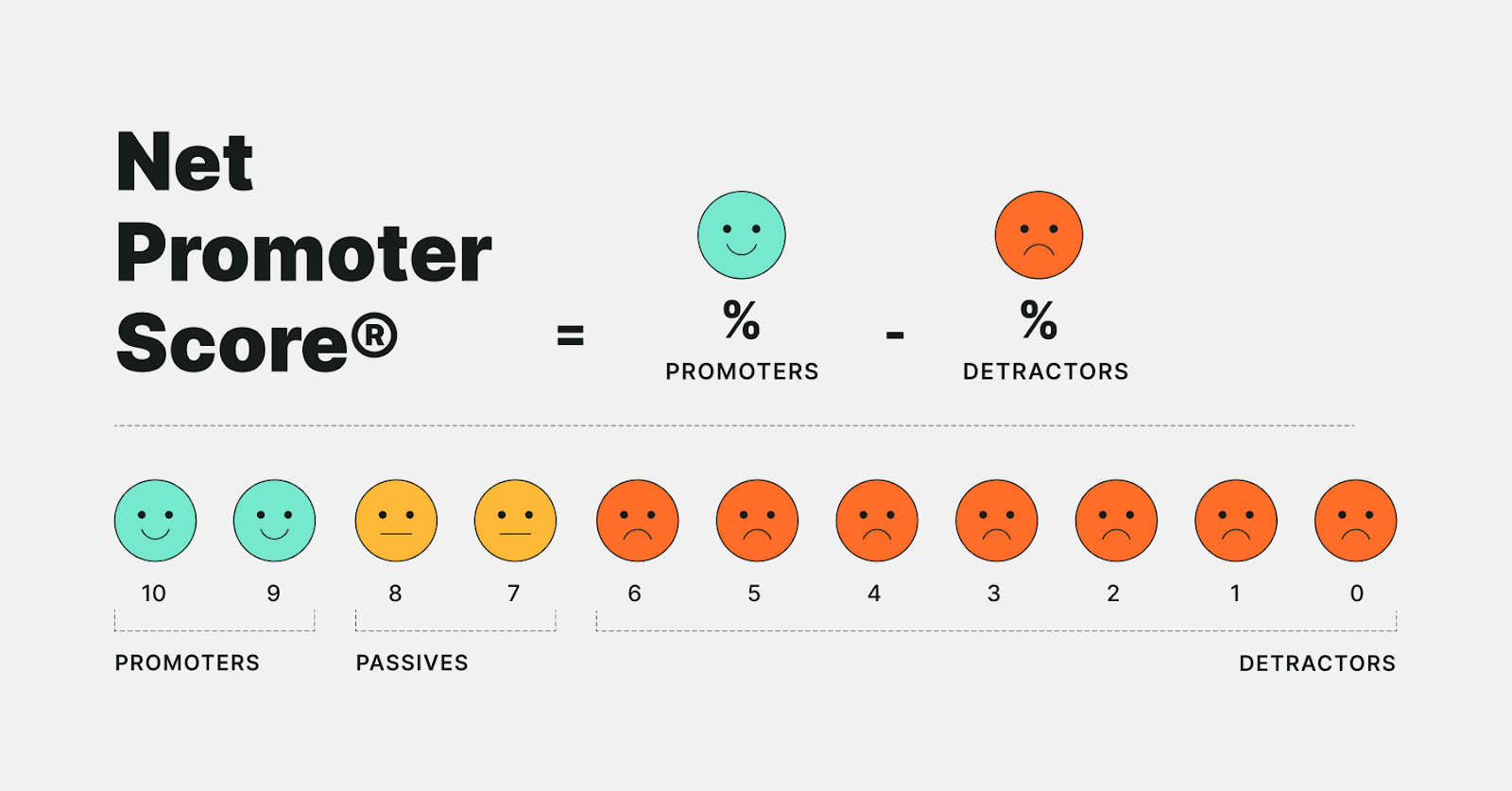
Source: B2B International
And for e-commerce brands and certain SaaS companies, you can analyze the repeat purchase rate, as this can be extremely helpful for measuring customer loyalty as well.
Customer Lifetime Analytics
Finally, this form of data analytics allows you to determine “the total net profit you can expect to generate from a customer throughout your entire relationship. Customer lifetime analytics takes into account the customer’s initial purchase, repeat purchases, and the average duration of their relationship with your company.”
To visualize, customer lifetime value will look something like this and helps you break your customer base down into three core groups — inactive nonprofitable customers, active profitable customers, and proactive very profitable customers.
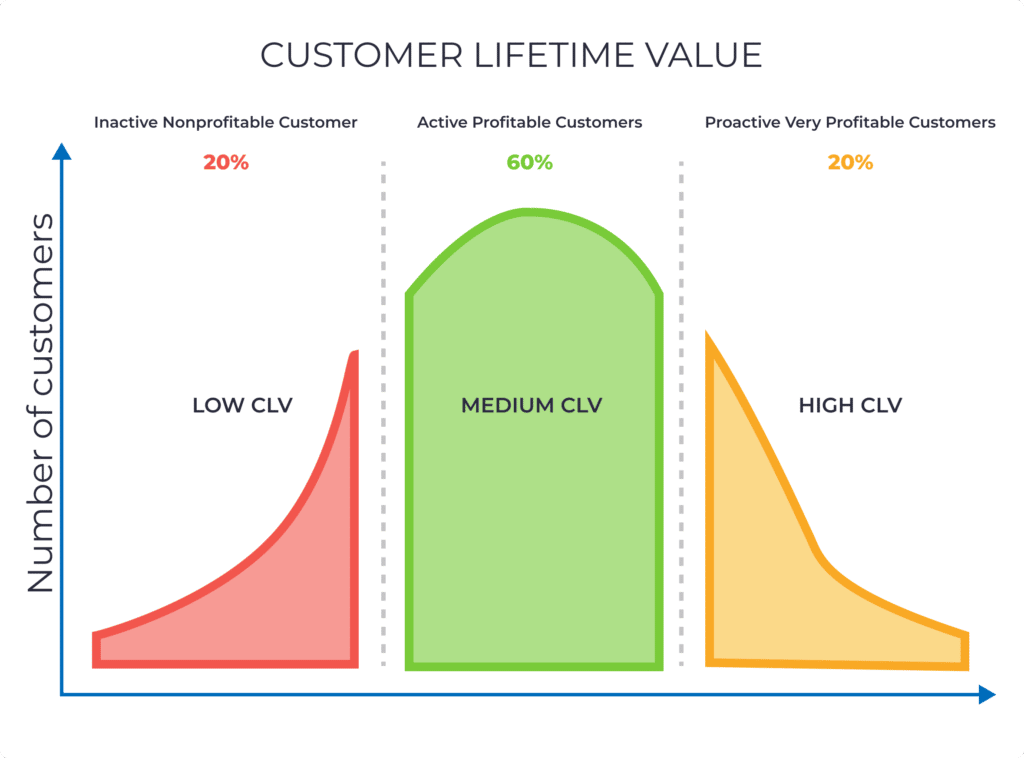 Image: Custify
Image: Custify
By having this information, you’ll be better able to fully understand the long-term impact of acquiring and retaining customers, as well as how to best prioritize customers.
How Woopra Can Help
While there are, admittedly, numerous customer analytics platforms available, Woopra is one of the best for delivering end-to-end analysis on every touchpoint in the customer experience.
From detailed funnel attribution to feature usage trends to full-on behavioral analysis, Woopra is designed to help you understand who your customers are and their behaviors.
With Journey Reports, you can visualize the steps visitors take in their paths to become customers and figure out what’s driving engagement.
With Trends Reports, you can see how key metrics like feature usage, subscriptions, and campaign performance change over time to continually fuel positive growth.
And with Retention Reports, you can determine what percentage of users continue to use your product over time, while also identifying potential problems that could be leading to churn.
The primary goal of Woopra is to democratize knowledge so every team member in your company can make data-driven decisions and take real-time action to improve every aspect of the customer experience.
So if you’re looking for a platform that goes well beyond the basics of something like Google Analytics or Adobe Analytics and focuses specifically on the customer journey, you’ll want to learn more about Woopra customer analytics.
Closing Thoughts
When it comes to understanding customer journeys and what makes users do what they do, a customer journey analytics solution is an invaluable tool.
By visualizing every touchpoint and seeing how it impacts the customer experience, you’re armed with the data you need to optimize it, which should, in turn, increase retention, growth, loyalty, and customer success.



